Graduate Facilities
The Environmental Resources Engineering (ERE) and Energy Technology and Policy (ETaP) graduate options have access to high quality laboratory and computer equipment. These include facilities associated with the engineering department, the Schatz Energy Research Center, the Arcata Marsh and Wildlife Sanctuary, the Campus Center for Appropriate Technology, and others.
Environmental Resources Engineering (ERE) Facilities
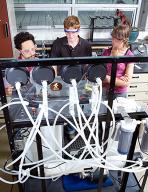
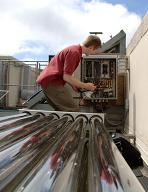
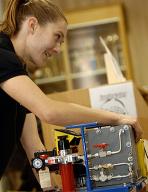
The Environmental Resources Engineering Department's facilities include laboratories for thermodynamics, hydraulics, water qualityand a rooftop solar energy lab. Among other equipment, these labs include instruments for testing solar photovoltaic and solar water heating system components, a hydraulic flume, a sediment transport flume, and a range of instruments related to water quality testing.
The ERE Department also has four student computer labs with over 50 workstations. The computers, which are available 24/7, are configured to dual-boot in either Windows XP or SUSE Linux. In addition to the standard software for office productivity, image processing, and web development, the labs have specialized software for engineering mathematics (Mathematica, Matlab, Scilab), computer programming (Fortran, C, Visual Basic), computer automated design (CAD), hydraulic design and analysis, rainfall/runoff simulation models, groundwater modeling, hydrologic time series analysis, and solar energy system design.
The Schatz Energy Research Center (SERC)
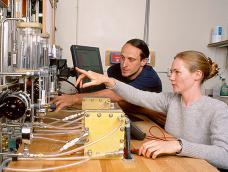
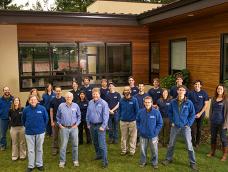
The Schatz Energy Research Center (SERC) is dedicated to the development and deployment of clean and renewable energy technologies. SERC has a history as a national leader for research and development related to hydrogen energy and proton exchange membrane (PEM) fuel cells. It is additionally recognized internationally for work in areas including solar power, biomass energy, clean transportation, and energy access for low income people in developing countries. The work includes activities related to research and development, technology demonstration, energy systems analysis, and education and training. SERC provides a rare opportunity for graduate and undergraduate students to acquire hands-on experience with emerging energy technologies.
SERC's staff currently consists of about 30 members, including professors, research staff, administrative staff, and students. Over the past six years, over 40 graduate and undergraduate students have worked on projects at SERC. The center is located in a modern facility that was built in 2011. The 6,000 square foot building houses an exterior laboratory, two indoor labs with a wide array of specialized test equipment, a machine shop, an electronics shop, a conference and demonstration room, and offices for staff and students.
Recent projects at SERC include serving as technical lead for the development and implmentation of an international quality assurance program for solar off-grid energy systems; biomass energy research involving torrefaction, densification, and biochar production; development of a high-efficiency biomass energy conversion system at the Blue Lake Rancheria Indian Reservation; computer modeling of potential use and charging patterns of plug-in electric vehicles to aid in infrastructure planning; experimental research on aqueous phase reformation of liquid organic fuels; designing and building a refueling station for hydrogen powered vehicles on the Humboldt campus; developing energy education curriculum for high school chemistry classes; and working with the Yurok Indian Tribe to develop renewable energy resources on their Reservation.
Key sources of project funding for work at SERC include the California Energy Commission, the U.S. Department of Energy, the World Bank, and the International Finance Corporation. SERC works closely with partners including the Blue Lake Rancheria Tribe, the Redwood Coast Energy Authority, Pacific Gas and Electric, Siemens Corporation, the Lighting Africa, Lighting Asia, and Lighting Global programs of the World Bank Group, the U.S. Department of Energy's Global Lighting and Energy Access Program (Global LEAP), Lawrence Berkeley National Laboratory, and the National Renewable Energy Laboratory.
Arcata Marsh and Wildlife Sanctuary

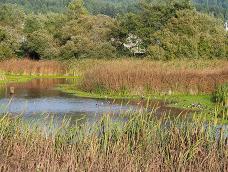
The Arcata Marsh and Wildlife Sanctuary was constructed in 1981. The City of Arcata incorporated wastewater treatment to the system in 1986. The Arcata Marsh is an example of a community's involvement in environmental politics, innovative uses of land, and applications of appropriate technology in a small urban community. The marsh has multiple uses including recreation, wildlife habitat, education, and wastewater treatment. Faculty and students from the ERE program were centrally involved in the original design and development of the Marsh's constructed wetland water treatment system, and they continue to play a key role through projects and research geared towards the continued optimization of the system.
The Campus Center for Appropriate Technology (CCAT)
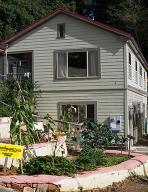
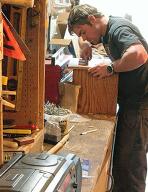
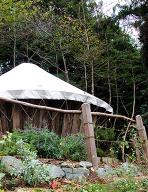
The Campus Center for Appropriate Technology (CCAT) is a live-in demonstration home and educational center for appropriate technology and resource conservation on the Humboldt campus. Motivated by an ethic of "education by example", CCAT offers tours, workshops, and opportunities for hands-on involvement to university students and the general public. CCAT works with fifteen Humboldt classes a year to incorporate new appropriate technologies into this living laboratory in sustainability. The work done by CCAT has resulted in the following achievements: CCAT uses a fraction of the energy consumed by the average U.S. house, produces almost zero waste, and serves as a national model for appropriate technology.